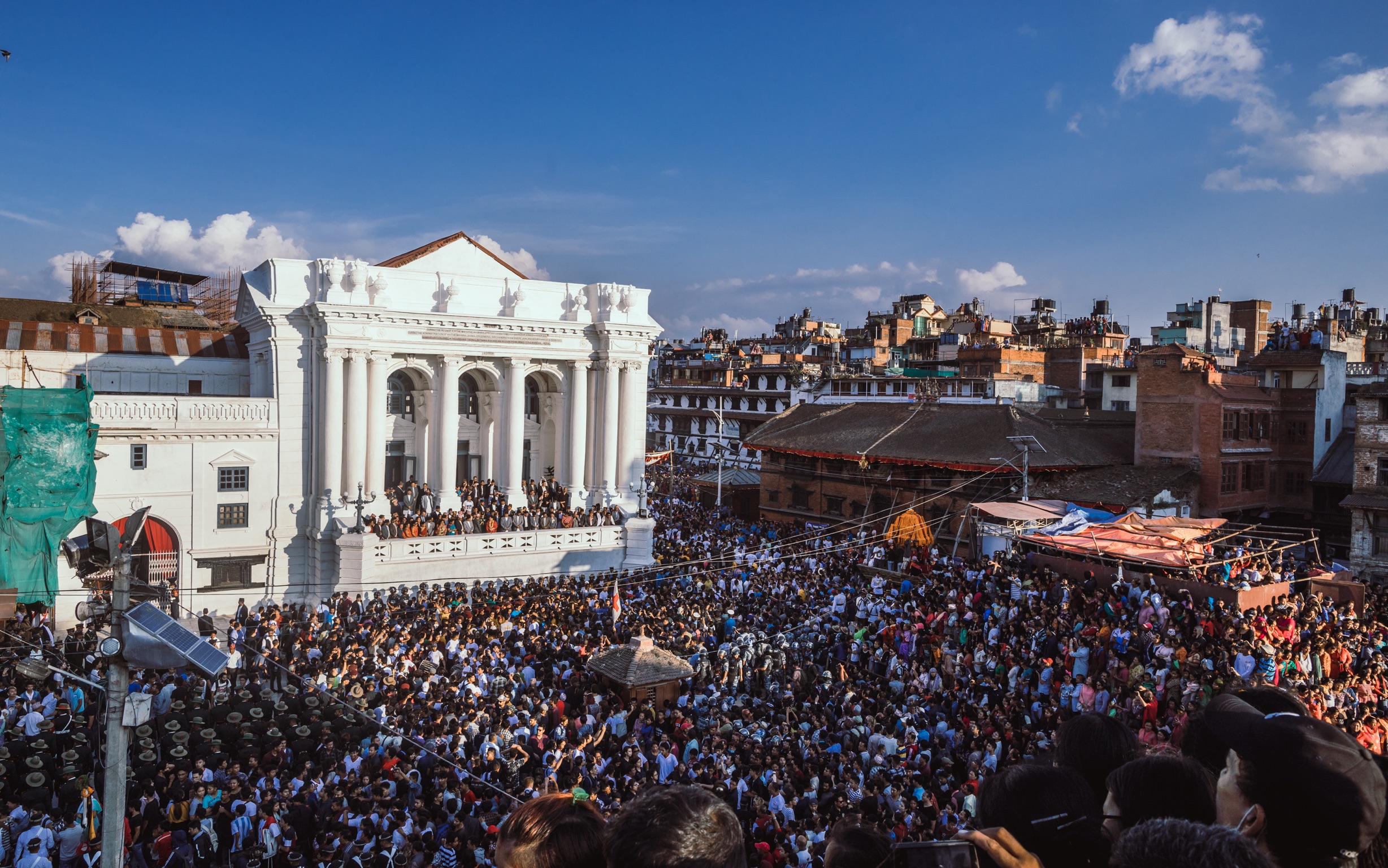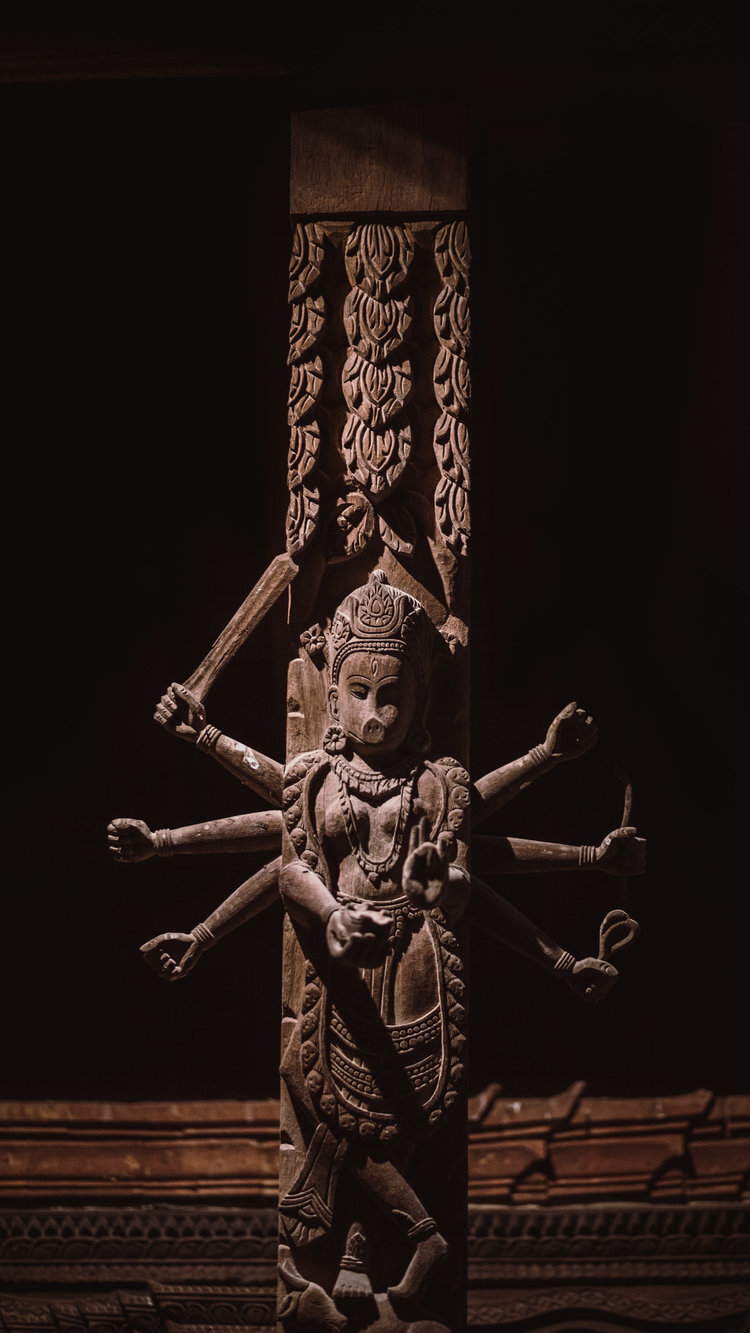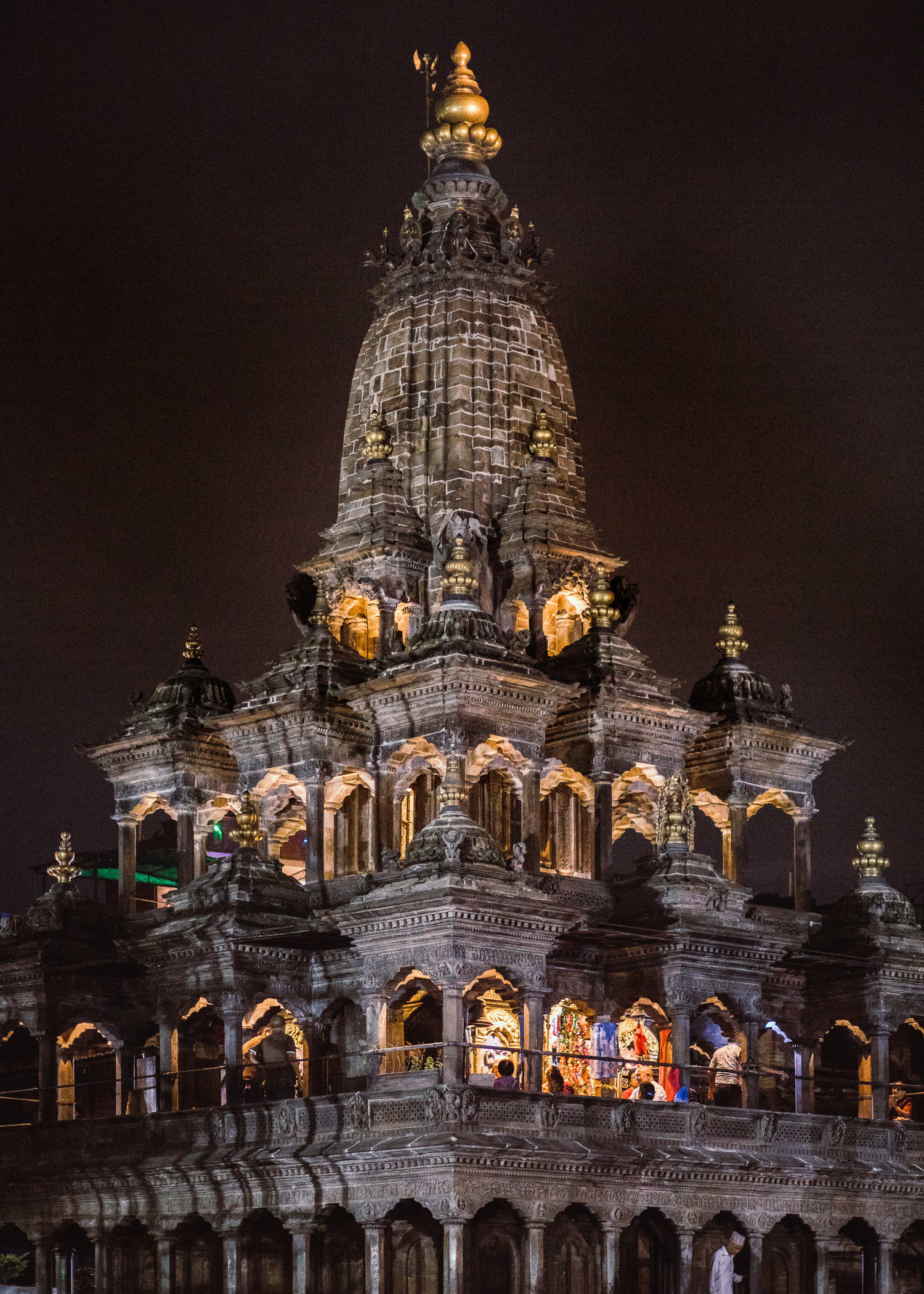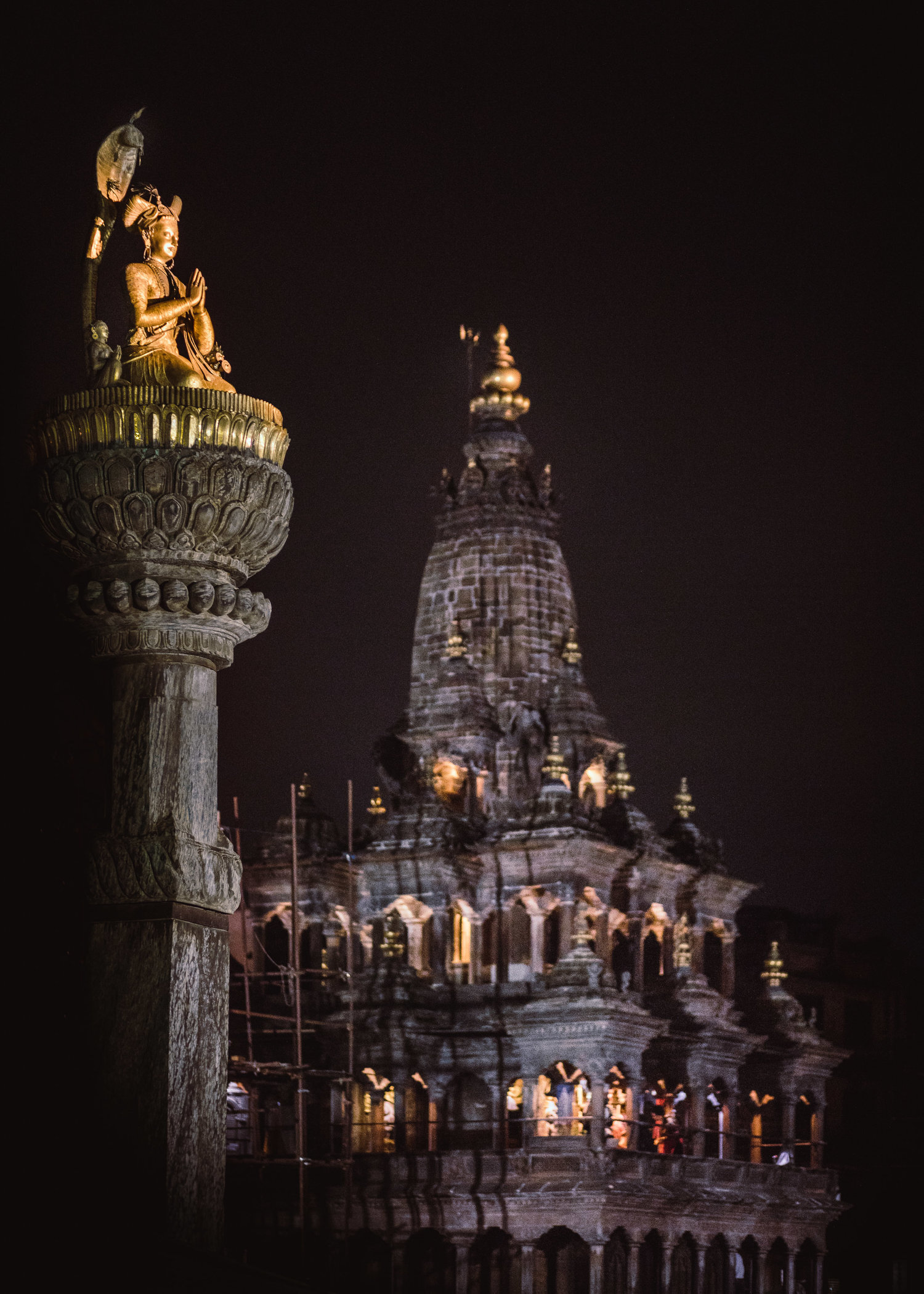28-01-2013Day 12 of the Kangchenjunga trekking
11-11 From Kambachen to Ghunsa
During the night one of us woke up a few times because of rats on his sleeping bag. An early start can be hard but also brings the most beautiful morning light in the village for photography. Kambachen is surrounded by high Himalayan mountains that lead up to more than 7000 metres. The early morning and late afternoon views are quite spectacular. You can see smoke starting to come through the holes in the roofs and the shepherds leaving their houses to take their yaks to different places. Yaks are the main way to transport daily requirements like clothing and food from one village to another. Yaks also provide fuel for the stoves as people in the villages above the tree line have no fire wood to use for cooking. They gather the yak dung (shit), dry it and burn it in their stoves. To Kambachen or to return from Kambachen to Ghunsa you can choose to take the left trail or the right trail. Both lead over treacheous terrain and they both finish at Kambachen. Depending on erosion and the state of the trail you have to make your best choice. We were advised to take the same route back as we came up.
Back in the lodge at Ghunsa, we found out it was the first day of the Diwali festival also known as 'Deepavali' or 'Tihar'. This Hindu festival takes up to five days of singing and dancing and is also called the festival of lights. Diwali involves the lighting of candles or small clay lamps filled with oil to signify the triumph of good over evil. These lights are kept on during the night and one's house is cleaned, both done in order to make the goddess Lakshmi feel welcome. Firecrackers are burst because it is believed that it drives away evil spirits. During Diwali, all the celebrants wear new clothes and share sweets and snacks with family members and friends.
The festival starts with Dhanteras on which most Indian business communities begin their financial year. The second day of the festival is called the Naraka Chaturdasi. Amavasya, the third day of Diwali, marks the worship of Lakshmi, the goddess of wealth. The fourth day of Diwali is known as Kartika Shudda Padyami. The fifth day is referred to as Yama Dvitiya (also called Bhai Dooj), and on this day sisters invite their brothers to their homes. Diwali marks the end of the harvest season. Farmers give thanks for the bounty of the year gone by, and pray for a good harvest for the year to come.
In the evening dancing and singing took place in the courtyard of the lodge. Inside we enjoyed some Raksi and Tongba. You can find both drinks in some of the villages where the local people make them. Raksi is a sort of strong wine. Raksi is Nepalese drink made from different grains. First, grain is cooked, then cooled down, and mixed with yeast and kept in a basket maintaining a constant temparature for some days. Then it is kept in the pot, made from clay, and it is known as 'Jad beer'. Then the Jad is distilled in a process called paini. The distilled product is known as "Raksi".
Tongba is a millet-based alcoholic beverage found in the far eastern mountainous region of Nepal and the neighbouring Darjeeling and Sikkim. It is the traditional and indigenous drink of the Limbu people of eastern Nepal. To Limbus Tongba is like what Sake is to Japanese, Vodka to Russians and Wine to French. Tongba is culturally and religiously important to the Limbu people of far eastern Nepal.
It is consumed in a unique way: the fermented millet is put in a container, also traditionally called a Tongba, and boiled water is poured in it to the brim. It is then left undisturbed for about five minutes. Once the five minutes has passed it is ready to drink; a fine bamboo straw with a blind end, but perforated on the side to act as a filter, is inserted into the container to suck out the warm water and alcohol from the millet grains. More hot water is added as the tongba becomes dry, and the process is repeated until the alcohol is exhausted.
In the Diwali festival everyone is invited to take part. This involves drinking, clapping your hands and dancing. At the end giving a small donation for the local community. During the night local groups come and go to celebrate even when all people in the village are asleep. Finaly they get some food and drink and a place to rest.
13-01-2013
Day 10 of the Kangchenjunga trekking
9-11 From Selele to Ghunsa
It was a hard cold night the four of us sleeping on wooden boards. Because of this waking up at 6.30 was no problem but getting out of the warm sleeping bag really was. While having the breakfast as usual we are all looking forward to descent to the Ghunsa Khola valley where we would find plenty of choice for breakfast, lunch and dinner. But still no Pringles for one of our team members who was looking for them all the way. Last days were tough so we needed to recover and regain strength again. We crossed some more passes, each of them about 4000 meters high. After the last pass we started descending through beautiful rhododendron forests. The last bit before the final descent was a bit tricky because a supply tube to the local water power plant was broken and the spill of water formed a massive layer of ice on the trail. We arrived at Ghunsa after a half day of pretty easy walking. Everyone arriving at Ghunsa will enjoy the luxury of choice for food and drinks. To enjoy the sun in Ghunsa you should be aware that at this time of the year the sun hides early behind the mountain range.
In the afternoon we took a stroll to the Cho Gheling Gompa. The ceremonial prayer room of the Gompa was closed but we were able to take a look inside through the hatch at the top of the stairs. It was a beautiful and very colourful sight. Thankas were hanging on the walls, prayer books wrapped in silk cloth were stacked away in open cupboards and several bronze statues were displayed on a small altar.
Back in the lodge we found out it was the first day of the Diwali festival also known as 'Deepavali' or as the Nepali people say 'Tihar'. This Hindu festival, also known as the festival of lights, consists of up to five days of singing and dancing. Diwali involves the lighting of candles or small clay lamps filled with oil to signify the triumph of good over evil. These lights are kept on during the night and one's house is cleaned, both done in order to make the goddess Lakshmi feel welcome. Firecrackers are lit because they are believed to drive away evil spirits. During Diwali, all the celebrants wear new clothes and share sweets and snacks with family members and friends.
The festival starts with Dhanteras on which most Indian business communities begin their financial year. The second day of the festival is called the Naraka Chaturdasi. Amavasya, the third day of Diwali, marks the worship of Lakshmi, the goddess of wealth. The fourth day of Diwali is known as Kartika Shudda Padyami. The fifth day is referred to as Yama Dvitiya (also called Bhai Dooj), and on this day sisters invite their brothers to their homes. Diwali marks the end of the harvest season. Farmers give thanks for the bounty of the year gone by, and pray for a good harvest for the year to come.
In the evening dancing and singing took place in the courtyard of the lodge. Inside we enjoyed some Raksi and Tongba. Both drinks are made by local people in some villages. Raksi is a type of strong wine. Raksi is Nepalese drink made from different grains. First, the grain is cooked, then cooled down, and mixed with yeast and kept in a basket maintaining a constant temperature for some days. Then it is kept in a clay pot, and it is known as 'Jad beer'. Then the Jad is distilled in a process called paini. The distilled product is known as "Raksi".
Tongba is a millet-based alcoholic beverage found in the far eastern mountainous region of Nepal and neighbouring Darjeeling and Sikkim. It is the traditional, indigenous drink of the Limbu people of eastern Nepal. To Limbus Tongba is what Sake is to Japanese, Vodka to Russians and Wine to French. Tongba is culturally and religiously important to the Limbu people of far eastern Nepal.
It is consumed in a unique way: the fermented millet is put in a container, also traditionally called a Tongba, and boiled water is poured in it to the brim. It is then left undisturbed for about five minutes. Once the five minutes has passed it is ready to drink; a fine bamboo straw with a blind end, but perforated on the side to act as a filter, is inserted into the container to suck out the warm water and alcohol from the millet grains. More hot water is added as the tongba becomes dry, and the process is repeated until the alcohol is exhausted.
In the Diwali festival everyone is invited to take part. This involves drinking, clapping your hands, dancing and at the end, giving a small donation for the local community. During the night local groups come and go to celebrate even when all people in the village are asleep. At the end of the evening they get some food and drink and a place to rest.
03-01-2013
Day 9 of the Kangchenjunga trekking:
8-11 From Tseram crossing Sinelapche La and Mirgin La to Selele
Same rituals passed in the morning before our tough day going up across the passes to Selele started. When starting out the temperature was comfortably low so we could set off at a good pace. But after a while the sun got strong, the temperature rose and the terrain became even more steep. Everybody took his or her own pace because we all knew we had a long day ahead of us. It took us 4 hours to get to the first pass, Sinelapche La at 4666 meters. We didn't take a long time to enjoy the first pass and went straight on to the next one. At the next one our guide told us to take a break and eat something. He brought us some boiled potatoes to give us some more energy for the upcoming hours. On the way we learned that even for Nepali people a track like this can be hard and confront you with the risks and dangers of altitude sickness. We met the guide of the Austrian people who were crossing the passes also, and he told us he had to send back his best porters because he got altitude sickness. We felt sorry for him but we were happy to continue to Selele. At 13:00 hrs. we crossed the second pass at 4627 meters. We continued to the next and last pass for the day at 4615 meters where there was a sign saying Mirgin La! So strange because our information said it should be Selele La. Best not to believe every sign as a fact. Sometimes we experienced forms of nature that are really impressive. Seeing a halo around your shadow while alone in the Himalayan mountains is pretty impressive. The descent was long but arriving at Selele was beautiful. There was a little lake before Selele and the surrounding scenery was amazing. Selele itself was a primitive settlement consisting of a small bhatti and a tiny hut with two bedrooms. One of us tried the toilet and saw that some westerners find it hard to use a Nepali toilet and just shit anywhere on the floor. In places like this you will find yourself with other trekkers and their team members while eating supper in the small smoky dining room. So nice!
03-01-2013
Day 8 of the Kangchenjunga trekking:
7-11 From Ramche to Oktam and back to Tseram
Waking up was difficult at this altitude. It was freezing cold during the night (minus 6 degrees) in the room so getting out of bed during the night wasn't the best adventure. Every night one of us had to go out to take a piss but every morning we shared stories of the beautiful sky filled with stars. Early in the morning before breakfast we were lucky to see some blue sheep high on the rock face alongside the lodge. We took some photos just before the blue sheep went up further along the mountain ridge. For breakfast we had Tibetan bread and omelettes for a change and took off for Oktam. We followed the Yalung glacier beside the moraine going to the highest point of our trek, Oktam.
The way to Oktam went gradually up but because of the altitude we had to take it slow. Every minute the view got better and better.....






















































































